Dr Merritt Moore, PhD, quantum physicist, ballerina and aspiring astronaut talks with Andrea Macdonald founder of ideaXme.

Dr Moore has achieved what some would call ‘the impossible’: a career as a professional ballet dancer and as an academic quantum physicist.” – University of Oxford. She plans on adding another profession to her career roster and that profession is astronaut!
Background: Dr. Merritt Moore graduated with Magna Cum Laude Honors in Physics from Harvard and graduated with a PhD in Atomic and Laser Physics from the University of Oxford. She also pursues a professional ballet career, previously with the Zurich Ballett, Boston Ballet, English National Ballet, and Norwegian National Ballet. She was recently awarded Forbes 30 under 30, and she was one of the 12 selected candidates to undergo rigorous astronaut selection on BBC Two “Astronauts: Do you have what it takes to be an astronaut?” In line with the principles which were espoused by Leonardo da Vinci, Merritt urges that the arts and sciences should not be mutually exclusive and that art makes science better and vice versa.
Dr Merritt Moore inspires young women around the world to pursue their dreams. She has been invited to be the featured speaker at the Forbes Women’s Summit in NY, Princeton Physics Department, panelist for the U.S. Embassy ‘Women in STEM’ Panel in London, and is featured in the bestseller “Good Night Stories for Rebel Girls“. Invited as artist-in-residence at Harvard ArtLab, Merritt is creating a duet between human dancer and industrial robotic arm. She explores the future of A.I./ machine learning, specifically with dance, and welcomes all forms of collaboration fusing dance, physics and tech.
Amongst the many things discussed in this ideaXme interview, Dr Merritt Moore talks of:
-How her ballet makes her science better and vice versa.
-Her academic achievements as a quantum physicist.
-How she has fused both her expertise as a dancer and physicist.
-Her resilience. -She talks of her dancing with robots project with Universal Robotics.
-Her discovery of dance late on in life and her work with the Norwegian National Ballet and English National Ballet.
-She answered two questions posed by Muhammad Hamza Waseem
Andrea Macdonald founder ideaXme: Today, we’re going to talk about the intersection between science and the arts. Leonardo da Vinci said: To develop a complete mind. Learn the art of science and the science of art. Learn how to see. Everything is connected to everything else.
I’m here with somebody who has spent her entire adult career working within science and art simultaneously, specifically the fields of quantum physics and dance. In your words, who are you?
Dr Merritt Moore: [00:01:00] Thank you so much for having me here. My name is Merritt Moore. I’m a professional ballet dancer and quantum physicist and now working on merging my two passions of science and art and tech together by creating dances with robots or working with VR and other tech related fields, incorporating arts.
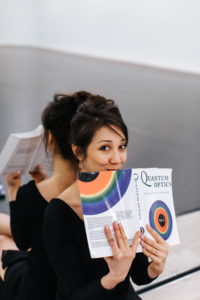
Andrea Macdonald founder ideaXme: [00:01:27] You’ve worked and are working at the top of your fields within the dance industry and quantum physics. Which one of the two disciplines did you start first?
Dr Merritt Moore: [00:01:40] I started dancing first. I was 13, which is middle aged in the dance world, and I just fell in love with it immediately because it felt so raw and authentic. I started physics when I was about 17, in my senior year of high school.
Andrea Macdonald founder ideaXme: [00:01:57] What area of physics did you study? Your PhD was in Atomic physics and Laser physics?
Dr Merritt Moore: [00:02:08] In Undergrad at Harvard, I had the opportunity to work in Condensed Matter Physics. It was as an experimentalist and then for my PhD at Oxford, I was in the Atomic and Laser Physics Department studying Quantum Optics.
Andrea Macdonald founder ideaXme: [00:02:23] And I have a question from Muhammad Hamza Waseem, who is currently studying for his Ph.D. at Oxford within the area of Condensed Matter Physics.
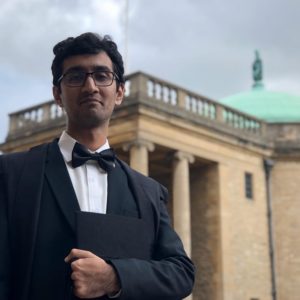
Andrea Macdonald founder ideaXme: [00:02:37] He would like to know what is your preferred interpretation of quantum physics and who are your heroes within the field, your living heroes within the field?
Dr Merritt Moore: [00:02:53] There’s the *many-worlds interpretation because who doesn’t like many worlds? *The many-worlds interpretation (MWI) is an interpretation of quantum mechanics that asserts that the universal wavefunction is objectively real, and that there is no wavefunction collapse. This implies that all possible outcomes of quantum measurements are physically realized in some “world” or universe.
Dr Merritt Moore: [00:03:01] And current quantum physicists, I would say living would be the grad students and postdocs who worked with me, side by side. They were incredibly brilliant and supportive and helpful. I had so much respect and admiration for all of them. And the professors who were at Harvard, who is Professor Charlie Marcus, and at Oxford, it was Professor Ian Walmsley, who gave me incredible opportunities and experiences and welcomed me to the lab. Especially as an undergrad, Charlie Marcus treated me as a grad student. And I think sometimes there are females in the field that feel that they aren’t welcomed. And I felt incredibly welcomed because of the environments that they created.
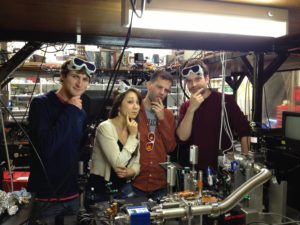
Dr Merritt Moore: [00:03:57] We spoke earlier about same from Leonardo da Vinci. You have mentioned this yourself, that your work was in quantum physics, makes your performance art stronger and vice versa. Could you talk of a series of dances that you have done where you have taken that theory and thinking further to actually fuse the two things, for example, your dance routine, bringing alive your PhD studies.
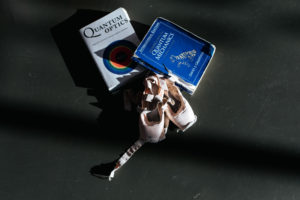
Dr Merritt Moore: [00:04:41] So, yeah, there’s a fun competition called Dancer PhD that’s just like hearted and allows scientists to show off their dance moves.
Dr Merritt Moore: [00:04:54] In my field of quantum optics, I was creating single photons of light through a process called *Spontaneous Parametric Down-Conversion. I’d written out this equation, this Hamiltonian Equation, which is really long a thousand times.
*Spontaneous Parametric Down-Conversion (SPDC), also known as parametric fluorescence, parametric noise, parametric scattering and all various combinations of the abbreviation SPDC, is a non-linear optical process where a photon spontaneously splits into two other photons of lower energies.
Dr Merritt Moore: [00:05:12] And but it wasn’t until I was thinking about how to incorporate it into dance that I then had a better grasp and just began thinking about it in a much more useful way in the lab.
Dr Merritt Moore: [00:05:30] In the equation we have a laser that goes into a crystal and creates pairs of photons and written out that equation a thousand times. But in the dance, I was creating the lab to represent the crystal, and then the music would represent what we call the pump laser. It made me think: Where are these two photons that are entangled? Hence the dance was called EnTANGOed. Where are they created? In the beginning in the middle and the end of the crystal? Because depending on how long they’re in the crystal, the dispersion, the properties of the crystal will cause the bandwidth of the photons to change and to morph. So, it made me think about what the bandwidth of the laser light coming in was, and it made me check that. And lo and behold, there was an issue there that I needed to fix and hence it like created the desired results for the PhD. It was like a fairy tale.
Dr Merritt Moore: [00:06:30] I think imagination and creativity helps to visualize the problem. And visualising the problem helps solve it. Whereas often we’re given the formula and told to memorize it and then to kind of regurgitate it. Whereas, the heroes, the real heroes like Einstein visualized himself like on a light beam and came up with special relativity rather than starting with equations. He first used that visualization tool. That’s where I see arts and sciences coming together, not just for communication, which I think is important, but a visualizing and imagination, creativity. And then further, I hope that it will create edge cases like test edge cases and so we can push on the art side and the research side.
Andrea Macdonald founder ideaXme: [00:07:25] Could you also talk to us about the dance piece that you did for the Apollo 11 50th anniversary?
Dr Merritt Moore: [00:07:38] I was in Norway for the 50th anniversary. And I thought: I’ve been so inspired. (I want to go to the moon one day. That’s like my ultimate dream). The BBC had sent out a request UK wide to select 12 participants to undergo astronaut selection process. And I was lucky enough to be one of the 12 selected out of a couple of thousand. And they had us undergoing like there in the helicopter. And we had to learn how to hover it in one try without any previous training.
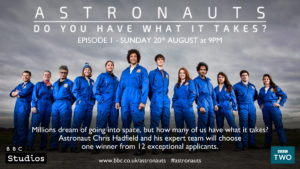
Dr Merritt Moore: [00:08:19] They had us strapped into this capsule that was then flipped upside down into water and we had to get out of the window and get out. They had us driving the Mars rover.
Dr Merritt Moore: [00:08:33] They flew us to Germany to use the simulator to dock the Soyuz to the International Space Station.
[00:08:39] So it was so incredibly crazy that at the end of it, I was like, yes, this is what I want to do with my life and incorporated that brainpower and physical strength that I’ve been juggling all my life. And so hence I have been really fascinated.Dr Merritt Moore: [00:08:55] And that is the dream of the moment to go to the moon.
Andrea Macdonald founder ideaXme: [00:09:00] So what are you doing to other than having taken part in this incredible competition, what are you doing now to reach that goal?
Dr Merritt Moore: [00:09:11] So I was supposed to get my finished my private piloting license this year, but due to Covid-19, that is postponed. And I’ve applied for NASA. I’m waiting to hear back. I think I’m a bit young. And so, hence the research and the experimental play dance play with the robots is my kind of sneaky way or like it’s my fun way of gaining expertise in robotics and Ai and all of that type of equipment, expertise that would be needed as an astronaut.
Andrea Macdonald founder ideaXme: [00:09:54] Can you tell us a little bit more about your work with Universal Robotics, particularly during the lockdown?
Dr Merritt Moore: [00:10:04] This all started a year ago. I was at Norwegian National Ballet, had the opportunity to have access to one of the robots, and I just was hooked. I was it was a friend of a friend who had this robot. And I would like in between performances and after rehearsals, I’d go and explore because I’m super curious about human creativity and how technology can inspire that. In particular, this industrial robotic arm has 6 joints, and it moves in a peculiar way. I was looking at it and seeing if there was inspiration for movement for myself and how looking at communication. The research says that communication is ninety three percent like nonverbal and predominantly body language. So, I was exploring: Does body language have to be in a human form? Can it come from something that looks totally different? And so, this started a year ago. I was at The Norwegian National ballet and I had the opportunity to have access to one of the robots. I was there in Norway when Harvard ArtLab invited me to be one of the first artist in residence to explore that January, February, right before the lockdown and the lockdown happened. And it was one of those times whereas a dancer, all my gigs have been cancelled, everything had been cancelled for that year. And so, it was like, OK, this is a massive challenge. But I believe that with every challenge, there’s opportunity. And so, circumstances made me have a think. And I thought: Strange that I was just dancing with a robot. A Robot is Covid-19 free and could be my only dance partner for a very long time.
Dr Merritt Moore: [00:11:42] So I poked and prodded universal robotics: I said: You guys want to lend me a robot? And they finally, they finally relented after I poked many, many of them.
Dr Merritt Moore: [00:11:55] And then at first, I was just for two weeks. But then they liked what I was doing. So, then it was a month and then continue to four months. And now it’s going to be a continuing project, which is super fun and exciting.
Andrea Macdonald founder ideaXme: [00:12:08] Can we talk a little bit about your dance career now? But before we do, Sir Ken Robinson, renowned educationalist, talks of an incident that happened at a doctor’s surgery where a mother takes the child, her daughter to see the doctor because there’s something wrong with her communication skills. She’s maybe not as much of a “chatterbox” as other kids that age.
Andrea Macdonald founder ideaXme: [00:12:39] And the doctor turns around and says: There’s nothing wrong with your daughter. She’s a dancer! You have spoken a little bit about what you deem to be communications challenges that you had as a very young child. Can you talk to us about your journey through dance and how dance has helped you to communicate?
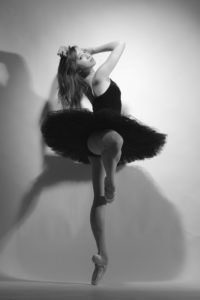
Dr Merritt Moore: [00:13:02] I love that story because and I feel it so strongly because I didn’t talk until, I was 3 years old and even then, I would speak the bare minimum. And now I, I also don’t find speaking the most natural way to communicate like I am much more natural if I can use my body to express myself. I find it a lot truer and more authentic to how I’m feeling and how I want to express myself. I love that story because Einstein has a great quote. That’s like everybody’s a genius. But if you judge a fish by its ability to climb a tree, it will live its whole life believing it’s stupid. And I think that’s so relevant. Sometimes nowadays, we have these definitions of what successes or what we need to be and what checkboxes we need to have. And so that’s such a beautiful story. I found it. I feel very fortunate that I found dance and physics as well. It’s also non-verbal math equations. So, that’s how I gravitated towards both.
Andrea Macdonald founder ideaXme: [00:14:08] You say you found dance. But you really have reached the top of the dance industry. You have danced the English National Ballet, the Norwegian National Ballet, many of the top companies. Could you talk a little bit about the incredible things that you’ve done in that area?
Andrea Macdonald founder ideaXme: [00:14:28] I’ve danced with Zurich Ballet and Boston Ballet and as you mentioned, the English National Ballet and Norwegian National Ballet. It was certainly a struggle getting there since I started at 13 years old.
Dr Merritt Moore: [00:14:43] I was told that I would never make it, since I started so late and wasn’t going to full time ballet school. I was going to an academic school, then went to Harvard and my second year at Harvard felt I was like, oh my God, it’s now or never. I either am going to make it as a ballet dancer or not.
Dr Merritt Moore: [00:15:01] It was just a really wonderful and challenging time. I just decided I was going to go and audition with 25 companies got rejected 24 times. And the 25th time I was accepted by Zurich ballet. It was a definitely a life changing experience.
Andrea Macdonald founder ideaXme: [00:15:25] You’ve been featured in Vogue, BBC, many of the world’s international publications. How has that felt?
Andrea Macdonald founder ideaXme: [00:15:36] I’ve been incredibly honoured that all that hard work has been recognised. There were times when friends were teasing me because the BBC said that my work was breaking news. The BBC said: We found this physicist ballerina”. Many of my friends said: Merritt, you’ve been doing this for over a decade! This is not breaking news. This is old news.
Dr Merritt Moore: [00:16:04] It is one of those things. It’s celebrated, but it’s been over a decade and has been the result of so much hard work.
Dr Merritt Moore: [00:16:14] And for me, it’s just been the training, so having finished the PhD and the work with those ballet companies is just the training. I always feel: This is just the beginning. What can I do? What am I going to be creating in combining these two areas – dance and physics?
Andrea Macdonald founder ideaXme: [00:16:34] You’re clearly extremely talented and very hard working, but resilience comes into play in reaching the top.
Andrea Macdonald founder ideaXme: [00:16:44] And, if you now go on to become an astronaut as well, achieving that goal will take an incredible amount of resilience.
Andrea Macdonald founder ideaXme: [00:16:54] How have you build that resilience from a practical perspective? What do you do daily to be strong?
Andrea Macdonald founder ideaXme: [00:17:04] And from a motivational perspective, what do you say to yourself to inspire yourself to keep going?
Dr Merritt Moore: [00:17:18] One quote that changed my life when I was 16 was in a fiction book. It was: Nothing’s impossible. Possible, just takes time. This quote eliminated the doubt of whether it’s possible. I thought it’s up to me whether or not I’m going to put in the time. What gets me going is, the dreams and the goals, but and how it’d be helpful for others.
Dr Merritt Moore: [00:17:51] So I gave myself a little mantra. I remember being kind of down, feeling insecure. And so, I made a mantra for myself, which is: You are free, and you give hope. And so, the first part is you’re free to mess up. You’re free to screw up. You’re free to do well. You’re free to just be you. And so, it just gave me that freedom in that space to do it my way and take my time. And then the second part is, you give hope. I thought even if I don’t make it any step forward that I do in pursuing both the science and dance, I think then would give hope to other people where they could look at me and say: If she did that, then I can definitely do it.
Dr Merritt Moore: [00:18:42] Just kind of push that limit and just prove because I, I think that it shouldn’t be such an anomaly and that it should be much more common that there are scientists, artists doing both at a high calibre. I think the hardest part of the challenge is more just the societal prejudices and barriers rather than actually the work in the lab or the studio. That’s kind of kept me going. I have said to myself: Ok, every little step forward that I take will give hope to someone else because I’m just kind of pushing through all the weeds to make the path for the next person behind me a bit easier. You have been featured in the Rebel Girl series of books. Can you talk to us about that?
Dr Merritt Moore: [00:19:38] That was a huge honour. I had no idea what Rebel Girls was. I just remember they sent an email and asked: Would you mind being in this book?
Dr Merritt Moore: [00:19:46] And I was like, I wouldn’t mind. I had my head down. I was doing my PhD. Little did I know that I was featured alongside Angela Merkel and J.K. Rowling. So, it’s been a huge, huge honour to be in that book. What gets me going is, is when I get these videos and photos and letters from these little girls who are dressed up in a lab coat and tutu and ready to take on the world.
Andrea Macdonald founder ideaXme: [00:20:21] You have a series of masterclasses which people who aspire to be like you can take. Could you talk a little bit about them and also how people access these masterclasses?
Dr Merritt Moore: [00:20:37] Well, I love mentoring. That’s one of my favourite things to do. There are 2 projects on that along those lines. One is during this lockdown, I was sensing that there was a lack of hope and a bit of loneliness amongst my followers, particularly amongst the young students that I mentor.
Dr Merritt Moore: [00:21:05] And so I thought, this could be an opportunity to bring everyone together, all these sci-artists. So, we started SciArt and created all these events. And we hosted Commander Astronaut Chris Hadfield and Neil de Grasse Tyson. We’ve had events where people can come together and discuss and collaborate. The thing that gets me going is like figuring out what people’s dreams are and then strategizing how to make it happen, what collaboration’s need to happen, what do they need to learn. That’s been really fun. And then in terms of masterclasses and mentoring, I conduct private workshops and private mentoring. People can connect with me on my website http://physicsonpointe.com.
Andrea Macdonald founder ideaXme: [00:22:00] Are you fearless?
Dr Merritt Moore: [00:22:02] I think I am on the side of fearless. I don’t feel fear very often. But I do feel a lack of confidence at times. But I will then “go for it” anyway, because I’ll be fearless. Yeah, so I don’t feel fear very often.
Andrea Macdonald founder ideaXme: [00:22:28] Out of everybody that you have connected with from the within the dance fields and the quantum physics fields, who has connected with you richly in order to move your human story and career forward?
Dr Merritt Moore: [00:22:49] I would not be where I am now without the incredible support and mentorship of many, many people. Starting with, Josie Walsh in Los Angeles, who was a dancer and one of my first dance teachers. I used to beat myself up to be perfect. She said to me: Look stop! Perfect is replaceable. You can go to an audition and a girl has amazing legs and feet, but she can be replaced with the next girl with amazing legs and feet. But what’s unique and different about you that you can bring to the table. No one else can replace that.
Dr Merritt Moore: [00:23:26] And so I took that wisdom for life. I think a lot of pressure to tick boxes, to do things a certain way.
Dr Merritt Moore: [00:23:42] I’m just giving myself allowances for being quirky (laughs) and doing it my own way. And I also had an incredible teacher in Italy who I trained with every holiday for six years. I flew out there and I’d sleep on my kitchen floor and we trained from six a.m. to midnight. And here in London now I have three Michelle, Sandy and Danielle, who just give their heart and soul to everything and in L.A. there’s another person who has helped me a great deal. I have had just the most incredible, generous mentors I can possibly imagine. And I’m so, so grateful to them.
Andrea Macdonald founder ideaXme: [00:24:32] So you mentioned earlier that being an astronaut is on your “what’s next list”. Is there anything else?
Dr Merritt Moore: [00:24:45] We’ll start with going to the Moon. I think we’ll do that one first.
[00:24:53] Dr. Merritt Moore, thank you very much for your time. It’s been an absolute pleasure. And thank you for moving the human story forward. [00:25:03] Thank you so much.
If you enjoyed this interview check out ideaXme interview with Tamara Rojo CBE, Principal Dancer and Artistic Director at English National Ballet.
Follow on Twitter: @physicsonpointe
ideaXme @ideaxm
Follow on Instagram:
Merritt Moore @physicsonpointe
ideaXme @ideaxme
Find ideaXme across the internet including on iTunes, SoundCloud, Radio Public, TuneIn Radio, I Heart Radio, YouTube, Vimeo, Google Podcasts, Spotify and more.
ideaXme is a global podcast, creator series and mentor programme. Our mission: Move the human story forward!™ ideaXme Ltd.
